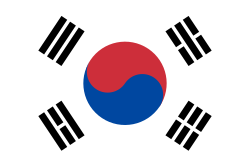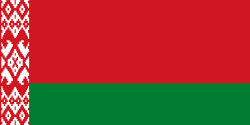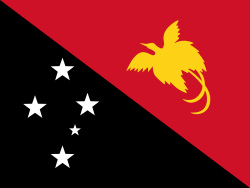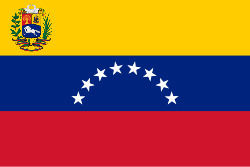Vzpírání na Letních olympijských hrách 2008 – ženy do 53 kg
| Vzpírání na Letních olympijských hrách 2008 | ||||||||||||||||||
|---|---|---|---|---|---|---|---|---|---|---|---|---|---|---|---|---|---|---|
| Vzpírání do 53 kg ženy | ||||||||||||||||||
| Základní údaje | ||||||||||||||||||
| Pořadatel | Mezinárodní vzpěračská federace Mezinárodní olympijský výbor | |||||||||||||||||
| Dějiště | Pejchangská univerzita | |||||||||||||||||
| Datum | 10. srpna 2008 | |||||||||||||||||
| Startující | 9 žen ze 9 zemí | |||||||||||||||||
| Medailisté | ||||||||||||||||||
| Soutěže | ||||||||||||||||||
| ||||||||||||||||||
| ||||||||||||||||||
Vzpěračky do 53 kg soutěžily druhý olympijský den, v neděli 10. srpna 2008. V kategorii startovalo 9 závodnic z 9 zemí, všechny soutěž dokončily.
Olympijskou šampiónkou se stala Thajka Prapawadee Džarenrattanatarakúnová, která v součtu obou disciplín vzepřela 221 kg. O jejím triumfu rozhodl již první pokus v nadhozu, druhým vytvořila nový olympijský rekord 126 kg. Ve svém posledním pokusu se neúspěšně pokusila vzepřít 130 kg, čímž by o 1 kg vylepšila stávající světový rekord.
Stříbrnou medaili získala díky nižší tělesné hmotnosti Jihokorejka Jun Čin-he s 213 kg, bronz původně vybojovala Běloruska Novikavová se stejným výkonem. Po reanalýze kontrolních vzorků v roce 2016 byla z důvodu porušení antidopingových pravidel diskvalifikována a bronz od ní převzala Raema Lisa Rumbewasová z Indonésie.
Program
Pozn.: Pekingského času (UTC+8)
| Datum | Čas | Skupina |
|---|---|---|
| Neděle, 10. srpna 2008 | 15:30–17:30 | A |
Přehled rekordů
Pozn.: Platné před začátkem soutěže
Výsledky
| Poř. | Závodnice | Stát | Těl. hm. [kg] | Trh [kg] | Nadhoz [kg] | Výsledek [kg] | |||||||
|---|---|---|---|---|---|---|---|---|---|---|---|---|---|
| 1. p. | 2. p. | 3. p. | 1. p. | 2. p. | 3. p. | ||||||||
| Praphávadí | 52,47 | 92 | 95 | 97 | 120 | 126 | 130 | 221 | |||||
| Jun Čin-he | 52,72 | 94 | 97 | 97 | 116 | 118 | 119 | 213 | |||||
| 52,87 | 92 | 95 | 97 | 116 | 116 | 118 | 213 | ||||||
| Raema Lisa Rumbewasová | 52,95 | 91 | 95 | 95 | 110 | 115 | 121 | 206 | |||||
| 4. | Yuderqui Contrerasová[2] | 52,74 | 89 | 93 | 96 | 111 | 118 | 120 | 204 | ||||
| 5. | Melanie Roachová | 52,54 | 79 | 81 | 83 | 105 | 108 | 110 | 193 | ||||
| 6. | Julia Rohdeová | 52,79 | 77 | 80 | 82 | 99 | 103 | 105 | 185 | ||||
| 7. | Dika Loa Touaová | 52,53 | 77 | 77 | 80 | 104 | 108 | 108 | 184 | ||||
| 8. | Judith Chacónová | 52,96 | 75 | 75 | 80 | 101 | 106 | 106 | 181 | ||||
Nově stanovené rekordy
| Druh rekordu | Disciplína | Držitelka | Výkon |
|---|---|---|---|
| Olympijský rekord | Nadhoz | 126 kg |
Poznámky
- ↑ Pozitivně dopingově testována při opětovném zkoumání vzorků v roce 2016; Mezinárodní vzpěračská federace o tom informovala v tiskové zprávě z 24. srpna 2016.
- ↑ Na konci dubna 2009 se objevila informace, že byla pozitivně dopingově testována (viz All 6 athletes identified in Beijing doping cases; News.Yahoo.com, 29. dubna 2009). Dopingová kauza byla mnohými považována za podivnou, protože testovanou látkou bylo „EPO 3. generace“, které nezlepšuje vzpěračskou výkonnost. Jméno Contrerasové bylo očištěno po analýze vzorku B, který vyšel jako negativní (viz např. Negative 'B' sample clears weightlifter; Sports.Eespn.Go.com, 17. června 2009)
Média použitá na této stránce
Pictograms of Olympic sports - Weightlifting. This is unofficial sample picture. Images of official Olympic pictograms for 1948 Summer Olympics and all Summer Olympics since 1964 can be found in corresponding Official Reports.
Olympic Rings without "rims" (gaps between the rings), As used, eg. in the logos of the 2008 and 2016 Olympics. The colour scheme applied here was specified in 2023 guidelines.
Olympic Rings without "rims" (gaps between the rings), As used, eg. in the logos of the 2008 and 2016 Olympics. The colour scheme applied here was specified in 2023 guidelines.
The national flag of Kingdom of Thailand; there are total of 3 colours:
- Red represents the blood spilt to protect Thailand’s independence and often more simply described as representing the nation.
- White represents the religion of Buddhism, the predominant religion of the nation
- Blue represents the monarchy of the nation, which is recognised as the centre of Thai hearts.
bendera Indonesia
The flag of the Dominican Republic has a centered white cross that extends to the edges. This emblem is similar to the flag design and shows a bible, a cross of gold and 6 Dominican flags. There are branches of olive and palm around the shield and above on the ribbon is the motto "Dios,Patria!, Libertad" ("God, Country, Freedom") and to amiable freedom. The blue is said to stand for liberty, red for the fire and blood of the independence struggle and the white cross symbolized that God has not forgotten his people. "Republica Dominicana". The Dominican flag was designed by Juan Pablo Duarte, father of the national Independence of Dominican Republic. The first dominican flag was sewn by a young lady named Concepción Bona, who lived across the street of El Baluarte, monument where the patriots gathered to fight for the independence, the night of February 27th, 1844. Concepción Bona was helped by her first cousin María de Jesús Pina.
The flag of the Dominican Republic has a centered white cross that extends to the edges. This emblem is similar to the flag design and shows a bible, a cross of gold and 6 Dominican flags. There are branches of olive and palm around the shield and above on the ribbon is the motto "Dios,Patria!, Libertad" ("God, Country, Freedom") and to amiable freedom. The blue is said to stand for liberty, red for the fire and blood of the independence struggle and the white cross symbolized that God has not forgotten his people. "Republica Dominicana". The Dominican flag was designed by Juan Pablo Duarte, father of the national Independence of Dominican Republic. The first dominican flag was sewn by a young lady named Concepción Bona, who lived across the street of El Baluarte, monument where the patriots gathered to fight for the independence, the night of February 27th, 1844. Concepción Bona was helped by her first cousin María de Jesús Pina.
















